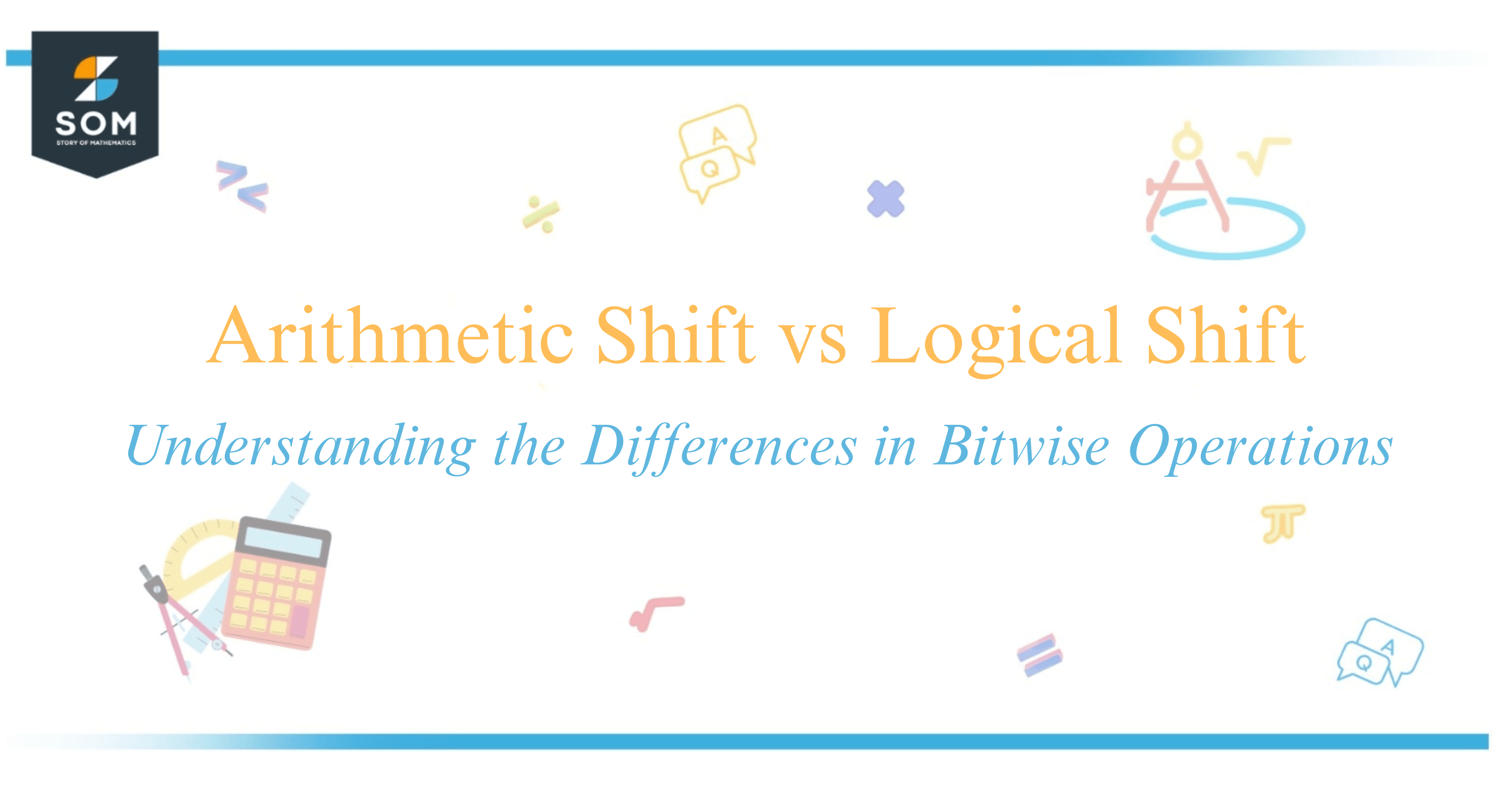
Arithmetic shift and logical shift are essential operations in computer science for manipulating binary data. As I explore these bit-shifting mechanisms, let’s focus on how they fundamentally alter binary numbers.
The arithmetic shift preserves the number’s sign by shifting bits left or right while filling in the vacated bit with the sign bit, effectively maintaining the number’s overall value even as it scales. In contrast, logical shift works similarly but without considering the number’s sign, padding the vacated position with zeros, which is ideal for unsigned binary representations.
Understanding when and why to use each can be quite handy, especially if you’re delving into low-level programming or computer architecture. Stay with me as I unveil the intricacies and application scenarios of each operation in the broader context of computer arithmetic.
Main Differences Between the Arithmetic and Logical Shifts
The main differences between arithmetic shifts and logical shifts lie in how they treat the sign bit and fill vacant positions. Arithmetic shifts preserve the sign of binary numbers, while logical shifts don’t, affecting their respective bit manipulations significantly.

In programming, bit shifting is a fundamental operation on binary numbers. Here’s a breakdown of the key aspects of arithmetic and logical shifts:
Directionality:
- Left Shifts (<<): Both logical and arithmetic left shifts move bits to the left, with the least significant bit (LSB) filled with zero. There is usually no difference between them for positive numbers.
- Right Shifts (>>, >>>): Logical shifts move bits to the right and fill the created positions with zeros. Arithmetic shifts also move bits to the right but fill the leading positions based on the sign bit of the original number.
Sign Preservation:
- Logical Shift: Does not consider the number assigned and fills with zeros irrespective of sign.
- Arithmetic Shift: Especially important for signed numbers, it maintains the number’s sign by propagating the sign bit during a right shift (known as sign extension).
Bitwise Operation:
- Logical Shift: Denoted as << or >> in languages like C, C++, Java, and JavaScript.
- Arithmetic Shift: Denoted as >> in some languages for right shifts; left shifts often use the same operator as logical left shift (<<).
Use Cases:
- Logical Shift: Typically used when dealing with unsigned types, to read data, perform multiplication/division by powers of two on unsigned integers, or to manipulate flags within an integer.
- Arithmetic Shift: Applied when we need to maintain the sign of signed integers, particularly useful in signed integer division and multiplication.
Remember, not all programming languages differentiate between these two shift operations explicitly. Some, like Python and Java, use the same syntax but behave differently with signed and unsigned numbers.
Conclusion
In my exploration of bitwise operations, I’ve observed that both arithmetic and logical shifts are fundamental to low–level programming. The choice between them hinges on the requirement to preserve the arithmetic meaning of the binary number involved.
When I need to shift bits and maintain the sign of a signed binary number, I opt for an arithmetic shift. For example, right-shifting a negative binary number using an arithmetic shift effectively divides it by two, preserving its sign. The operation is defined as $\text{Arithmetic Shift Right (ASR)}: \frac{n}{2^k}$, where ( n ) is the number and ( k ) is the number of positions we are shifting.
Conversely, for operations requiring pure bit manipulation without regard for signs, logical shifts are the appropriate choice. These shifts simply move bits left or right, filling in with zeros, which makes them ideal for unsigned binary numbers.
In summary, my approach to choosing between these two operations is context-driven:
- Arithmetic shift: when the sign matters and I’m dealing with signed integers.
- Logical shift: when I work with raw binary data or unsigned integers, where the concept of sign doesn’t apply.
Understanding these operations has enabled me to manipulate bits in programming with greater precision and to comprehend the underlying mechanics of computer arithmetic.
